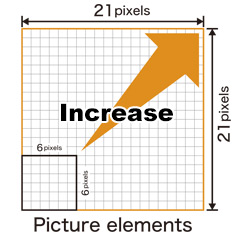

Windows system tray gamma control windows#
I have also been researching on how Windows tries to generate Monitor Ids for storing DPI scaling values.įor any monitor, the DPI scaling value selected by a user is stored at : HKEY_CURRENT_USER\Control Panel\Desktop\PerMonitorSettings\įor a Dell display connected to my machine, the monitor ID was DELA0BC9DRXV68A0LWL_21_07E0_33^7457214C9330EFC0300669BF736A5297. If we check the registry entries mentioned in answer, we come to know that these integers are stored as DWORD, and since my computer is little endian it implies that the last 4 bytes (bytes 21 to 24) are being used for them.Thus to send negative numbers we will have to use 2's complement of the DWORD, and write the bytes as little endian.
Windows system tray gamma control how to#
The only thing remaining is now to figure out how to get recommended DPI scaling value for a display, we will then be able to write an API of the following form - SetDPIScaling(monitor_LUID, DPIScale_percent). if recommended is 125%, a value of 1 would mean 150% scaling. 1 means one step ahead in scaling, -1 means one step down. Other integers correspond to relative dpi scaling with respect to this recommended value.

Byte number 21 is being used to specify DPI scaling, as all other bytes are same between 150%, and 175%.If we compare the two byte buffers, we can draw the following conclusions. Sure enough, the DPI scaling did change on running the code!!! BYTE buf = I then changed my DPI scaling back to 100%, and ran my code. I then wrote a simple C program to send these bytes (24 bytes - 0x18 bytes) to Displa圜onfigSetDeviceInfo(). To verify my theory, I copied (using WinDbg), the bytes of the DISPLAYCONFIG_DEVICE_INFO_HEADER struct which are sent to Displa圜onfigSetDeviceInfo() as parameter when DPI scaling is changed from System Settings app (tried setting 150% DPI scaling). It seems incredibly unfair that Microsoft has some special API for its own apps, which others cannot use. If we are able to reverse engineer this fully, we will have a working API to set DPI of a monitor. While the settings app is trying to send -4 for type, we can see that the enum has no negative value. The enum type, as defined in wingdi.h is : typedef enumĭISPLAYCONFIG_DEVICE_INFO_GET_SOURCE_NAME = 1,ĭISPLAYCONFIG_DEVICE_INFO_GET_TARGET_NAME = 2,ĭISPLAYCONFIG_DEVICE_INFO_GET_TARGET_PREFERRED_MODE = 3,ĭISPLAYCONFIG_DEVICE_INFO_GET_ADAPTER_NAME = 4,ĭISPLAYCONFIG_DEVICE_INFO_SET_TARGET_PERSISTENCE = 5,ĭISPLAYCONFIG_DEVICE_INFO_GET_TARGET_BASE_TYPE = 6,ĭISPLAYCONFIG_DEVICE_INFO_GET_SUPPORT_VIRTUAL_RESOLUTION = 7,ĭISPLAYCONFIG_DEVICE_INFO_SET_SUPPORT_VIRTUAL_RESOLUTION = 8,ĭISPLAYCONFIG_DEVICE_INFO_GET_ADVANCED_COLOR_INFO = 9,ĭISPLAYCONFIG_DEVICE_INFO_SET_ADVANCED_COLOR_STATE = 10,ĭISPLAYCONFIG_DEVICE_INFO_FORCE_UINT32 = 0xFFFFFFFF LowPart : 0xcbae īasically the values of the members of DISPLAYCONFIG_DEVICE_INFO_HEADER struct which gets passed to Displa圜onfigSetDeviceInfo() are: type : -4 Here are the parameters I found during my debugging session. I wasn't able to set a break-point on this function, but was able to set one on Displa圜onfigSetDeviceInfo() (bp user32!Displa圜onfigSetDeviceInfo).ĭispla圜onfigSetDeviceInfo ( msdn link) is a public function, but it seems that the settings app is sending it parameters which are not documented. I found that as soon as a particular function is executed - user32!_imp_NtUserDispla圜onfigSetDeviceInfo the new DPI setting takes effect on my machine. I used WinDbg to go through calls made by this app. The Systems settings app is a UWP app, but can be hooked with a debugger - WinDbg.This means Certainly there is an API, only that Microsoft has not made it public. System Settings app (new immersive control panel that comes with Windows 10) is able to do it.A simpler method for single monitor setups, or if you want to change DPI of just the prmary monitor is given here - ) ( see my other answer for a simple C++ API I created from this learning. Here is my learning from the RnD I did on system settings app (immersive control panel).


 0 kommentar(er)
0 kommentar(er)
